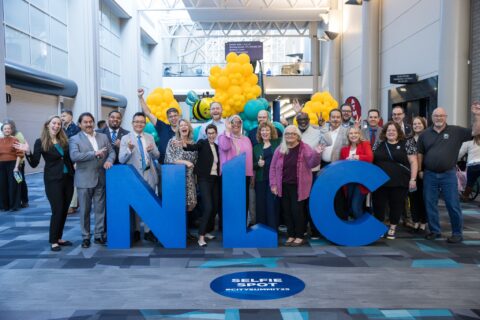Authored by Micah Gaudet, Deputy City Manager, City of Maricopa, AZ
Recently, several notable studies examined how we use and view AI. Taken together, these studies offer a clearer picture of AI adoption and use. AI is surging, with 98 percent of US adults saying they have seen or heard something about AI in the last year, according to a recent Gallup survey. One in ten people use ChatGPT at least weekly, according to a National Bureau of Economic Research paper, and message volume is doubling every eight months.
Usage
While people are aware of and using AI regularly, its core use is somewhat mundane. It is used to gather information, make decisions and document work, which appears consistent across professions and largely occupation-agnostic. Even in prompts involving writing, the overwhelming majority are related to editing, revising and polishing user-created text.
Anthropic’s Economic Index adds additional texture to this picture and highlights where AI is used, and not used, in existing work streams by profession. Policing, for instance, shows variation in AI use by role. Detectives use Large Language Models (LLMs) like Claude to prepare charges or responses to charges, and information for court. Officers are using Claude to assist motorists by providing road information. While core usage appears consistent across occupations, some professions may move faster than others.
In the U.S., AI usage is primarily focused on everyday tasks like nutrition, career documentation and personal advice. Usage patterns vary by state and economy. Users in high per-capita states are somewhat more likely to use AI for collaborative, augmentation-style work, while lower per-capita economies lean toward delegating full tasks to the model. The Economic Index shows variation by state. Texas users prioritize work-related tasks such as resumes, workflow optimization and K-12 educational materials. South Carolina has a very different mix, with elevated interest in legal drafting, gaming and personal relationship advice. In Arizona, which ranks 26th in per-capita use, the top uses of Claude include editing (5 percent of conversations), debugging (3 percent), tutoring (3 percent) and healthcare (3 percent). This suggests that state-level economics may determine what problems AI is being applied to and how AI is expected to work.
Public Trust
While adoption surges, public trust is not keeping pace. According to Pew Research, most Americans remain wary about the growing role of AI. Half of adults are more concerned than excited about AI, up sharply from 37 percent in 2021. Most adults under 30 believe AI will make people worse at creativity and will erode human relationships. Forty percent of adults over 65 share those concerns.
While views on AI’s impact are relatively negative, Pew Research shows that most Americans are open to using AI in specific cases. Strong majorities support using AI to detect financial crimes (70 percent) and identify fraud in government benefits (70 percent). Surprisingly, 61 percent support using AI to identify crime suspects. In their daily lives, 73 percent of American adults would allow AI to assist them a little with daily activities, although only 13 percent expressed willingness to let AI play a major role. Most interestingly, the strongest support for AI policy (72 percent) is expanding workforce training and AI education to help people learn how to develop or use AI. People are not rejecting AI outright. They are asking for education and training.
Across these studies, one theme is consistent: AI adoption is accelerating. Governments could consider deploying AI to automate tasks versus strengthening human judgment and whether AI governance includes appropriate and timely training to prepare the workforce to thrive alongside the new technology. The research suggests that the answers to those questions will matter more than adoption rates alone.
AI Toolkit for Municipalities
There are several types of AI and the benefits to cities are equally as diverse. Cities are harnessing the power of AI by improving city services, assisting employee tasks and assisting in analytics and decision-making. Explore the benefits as well as the potential risks of artificial intelligence in NLC’s AI Toolkit for Municipalities.









